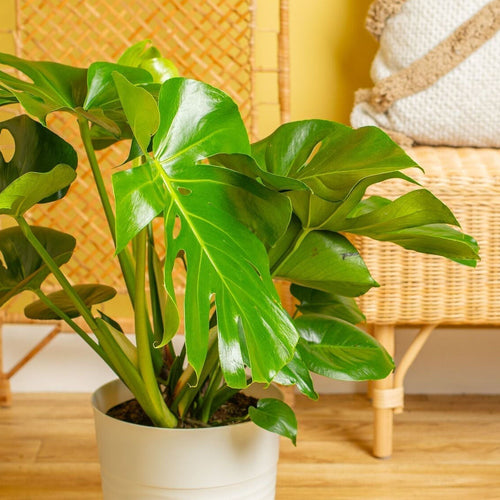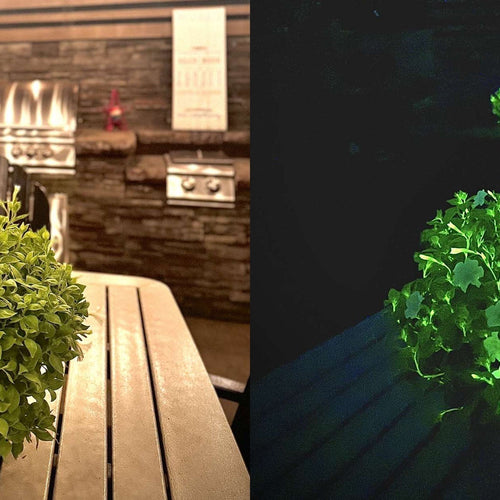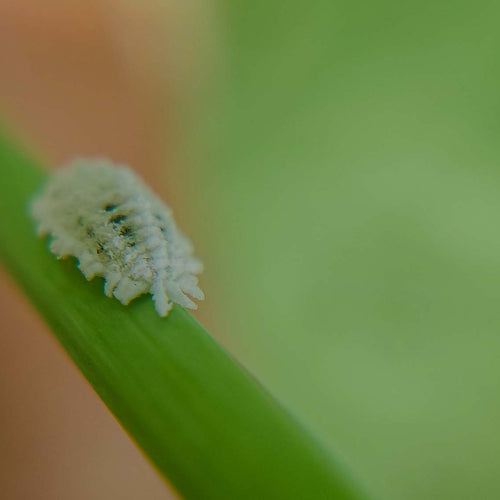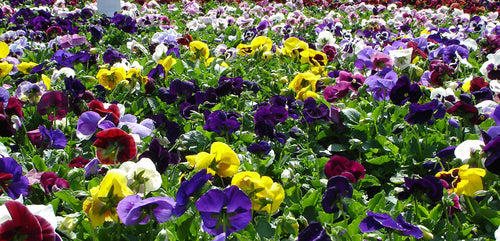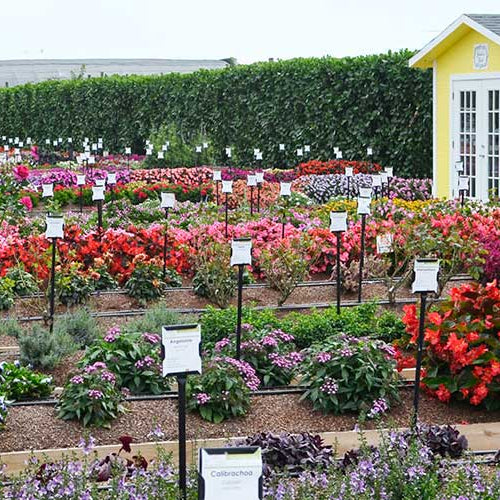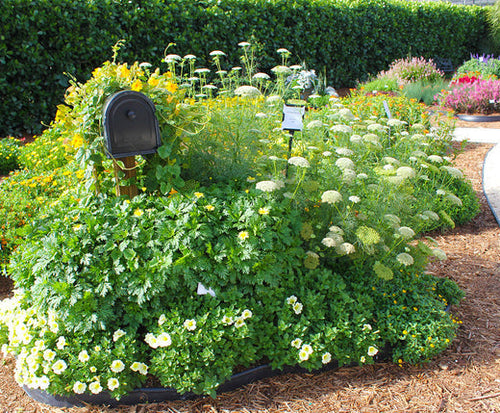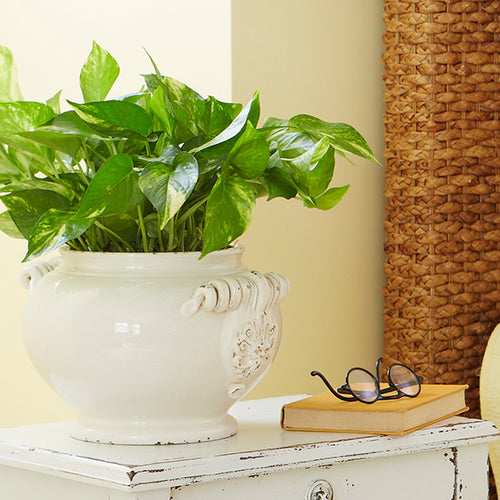Keep your late-summer garden looking fantastic with these easy tips for your August garden.

1. Divide Perennial Flowers
August is the best time to dig and divide perennial flowers in your garden (such as hosta, Oriental poppy, lily, daylily, ornamental grasses, and iris). Use a spade to lift the plant from the ground being careful to damage the root ball as little as possible. When the clump is out of the ground, use a large garden knife or spade to cut it into smaller pieces. Then, replant the smaller pieces or divisions as soon as possible.
Trial Garden Tip:
Some perennial flowers such as bearded iris and ornamental grasses have a tendency to die out in the center. When you divide these perennials cut around the centers and toss the dead tissue on your compost pile. Discover how to divide perennials
2. Add Fall Color
Give your flower border a late-summer injection of color by adding a generous helping of chrysanthemums. Available in an almost unlimited selection of colors, shapes, and flower forms, chrysanthemums go well with any garden decor. Plus, because they are sold in bud or bloom, they’ll add instant impact to pots, planters, or flower borders. Their nectar-rich flowers attract a variety of colorful pollinators including migrating Monarch butterflies. Mix single- and double-flowering varieties with asters, pansies, and other fall bloomers.
Trial Garden Tip:
Chrysanthemums are available in two general categories: florist and garden. Florist mums are idea for gift giving, but if you want color for your flower border, make sure you purchase garden mums that are tough enough to tolerate outdoor conditions.3. Replace Annual Flowers
By late summer, some annual flowers may look a bit worn out. Give your pots and planters a makeover by tucking in fresh, ready-to-bloom cool-season annual flowers that will keep the color show going through the fall. Just gently pull out dead or dying annuals, mix in a bit of fresh soil, and drop in the replacement. It’s that easy!
Trial Garden Tip:
Be creative when you select replacement annuals. It’s your chance to experiment with something you’ve never grown before to see how you it performs for you.4. Repot Houseplants
If you’ve given your houseplants a summer vacation outdoors, chances are they responded by with a lot of new growth. If so, August is the perfect time to move them to a larger container with fresh potting soil. This gives the plants time to acclimate to their new housing before cool weather arrives in fall. One of the best ways to know if your plant is ready for transplanting is to check the drainage hole of the pot. If you find roots dangling out of the drainage hole it means your plant is becoming too large for its container. Select a new pot that’s slightly larger than the old one.
Trial Garden Tip:
Use a soilless potting mix when you plant. Avoid using soil from your garden because the soil structure isn’t ideal for container culture and it could contain insect pests, diseases, or weed seeds.Get tips for repotting houseplants!
5. Wage War on Weeds
If you’ve been putting off weeding chores in the garden, August is the time to finally get busy. That’s because, as the growing season winds down, both annual and perennial weeds start to produce thousands of seeds that will germinate in your garden next spring. If left unchecked, these pesky invaders become extremely difficult to eliminate. The best time to weed is right after a rain when the soil is still moist. If rainfall is scarce, irrigate your garden thoroughly the night before you start your attack. You can pull weeds by hand or use a hoe. Just be sure to remove the roots. Weeds such as crabgrass or purslane quickly regenerate from any root left in the soil. As soon as you have the weeds removed, cover the area with a thick mulch of compost, straw, leaves, or shredded bark.
Trial Garden Tip:
Always maintain a sharp edge on your weeding tools. Keep a file handy and sharpen your hoe every time you work. The sharper the blade the faster you’ll get the job done and the easier it will be.Get more tips for keeping your garden weed free.
6. Plant Perennials and Shrubs
Late summer is a perfect time to plant perennials and flowering shrubs in many areas. They’ll take root during the cool, moist fall weather and be ready to pop into bloom next spring and summer. Some good candidates to plant now include hydrangeas, daylilies, lilies, sedums, ornamental grasses, peonies, and bearded iris. Just be sure you keep your new plants well watered if the weather is hot and dry. Mulching the beds also helps preserve soil moisture. In northern states, cover new plantings with a protective blanket of straw or leaves during their first winter. Wait until the ground freezes in late autumn before covering.
Trial Garden Tip:
Store plant tags in a safe place so that next spring you’ll be able to identify your perennials as they break dormancy.Dig in for tips on planting perennials!
7. Water Evergreens
If rainfall is scarce be sure to keep evergreen trees and shrubs hydrated. Because plants such as yew and arborvitae never go completely dormant, their roots should be slightly moist to help the plant survive drying winter winds, especially if you live in the North. If you start watering evergreens now they will have plenty of soil moisture around their roots before freezing temperatures make irrigation impossible. Newly planted evergreens are particularly susceptible to dry soil so make sure they get at least an inch of water a week.
Trial Garden Tip:
Soaker hoses are a great way to irrigate newly planted evergreens. The hose allows water to seeps slowly into the soil so there’s no wasteful runoff.8. Harvest Herbs
Although herbs can be harvested throughout the summer, the oils responsible for the most intense flavor and aroma are at their peak in late summer, just before the plants flower. Clip foliage in the early morning after the dew dries, but before the day heats up. One of the easiest ways to store herbs is to rinse them under cold water, chop them coarsely, and place them in water-filled ice cube trays. Then, simply place the trays in the freezer and pop out frozen herbs as you need them.
Trial Garden Tip:
Stop pruning perennial herbs such as tarragon, lavender, sage, oregano, and thyme at least one month before your last expected frost. Pruning encourages new growth that won’t have time to harden before cold weather hits.9. Consider Fertilizer
Northern gardeners should stop feeding roses, trees, shrubs, and perennial flowers now. Feeding your plants in the late summer and fall encourages new growth that probably won’t survive the winter. By putting your plants on a diet now, they’ll toughen up before freezing temperatures hit.
Trial Garden Tip:
In you live in the Deep South keep fertilizing your garden to promote flowering through the late autumn.10. Harvest Onions and Potatoes
Potatoes and onions will be ready for harvest as soon as the plants’ foliage turns brown and falls over. Carefully dig around each plant and lift the crop from the soil. After digging, use pruning shears to cut off the dead foliage. Then, move potatoes and onions to a shaded, well-ventilated location for a week to ten days to cure. The curing process toughens the skin and extends storage life. After curing, carefully brush away any excess soil still clinging to the skin. Store potatoes in well-ventilated baskets or bins in a dark room. If they’re exposed to light, the stored potatoes will turn green and be unusable. Onions can be stored in mesh bags hung from the ceiling in a cool, dark room.






